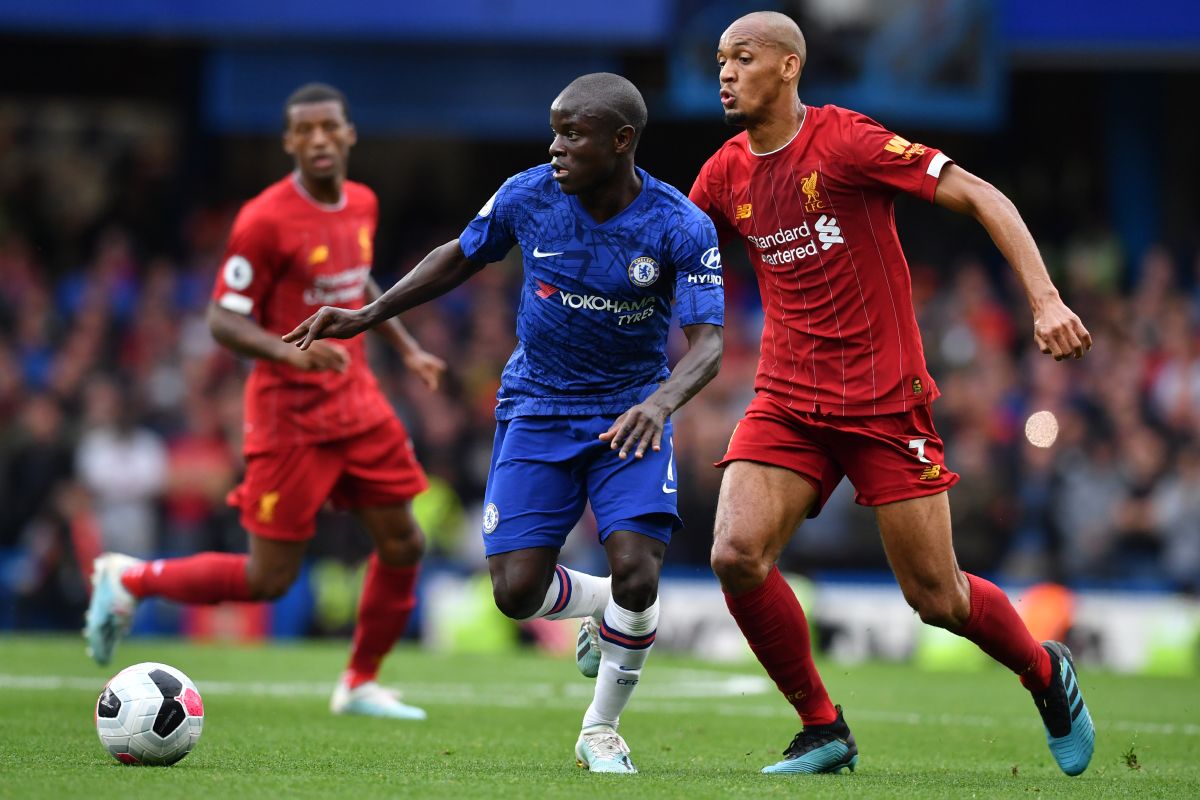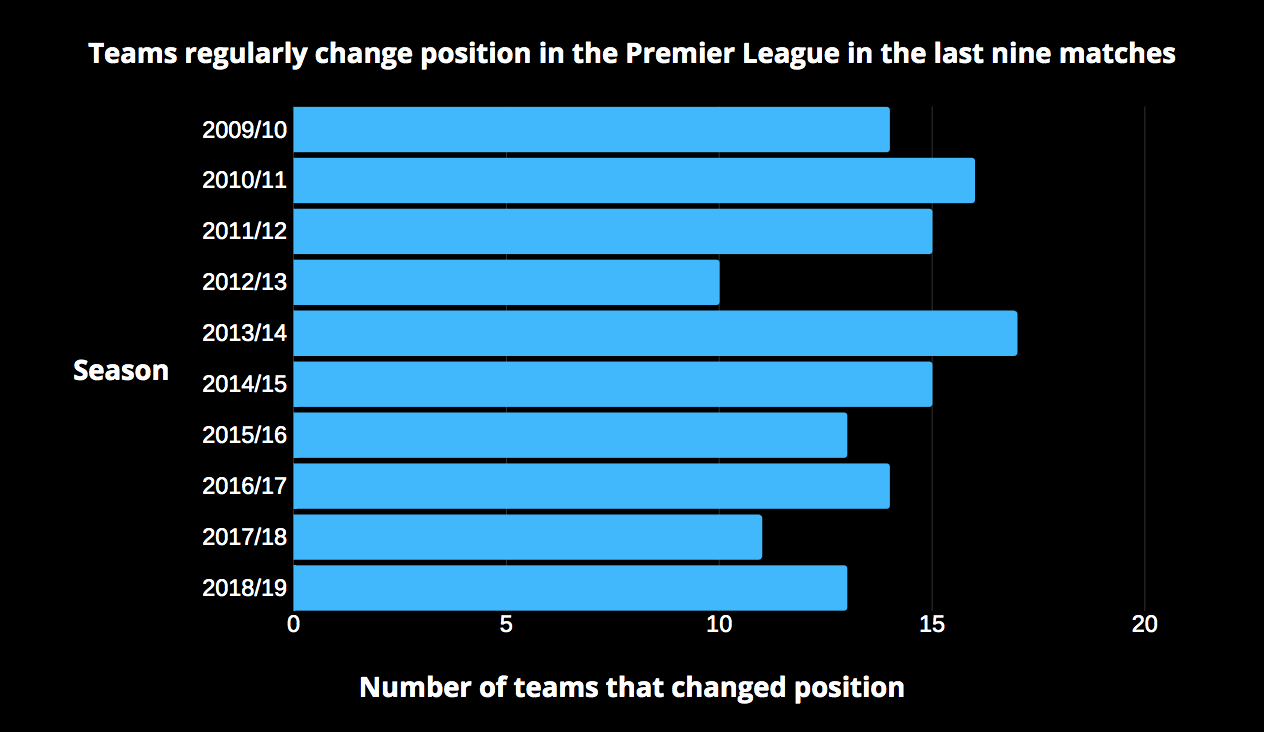
April 25, 2020
In a report in the Sunday Times last month, there were suggestions that the Premier League was looking at completing the 2019/20 season by playing just two more matches. Staging Aston Villa vs Sheffield United and Manchester City vs Arsenal would mean every team has played 29 matches in the league, in a “fair” ending to the season given the coronavirus pandemic.
Every season, given there are 20 teams in England’s top-flight football competition, teams play 38 games. One game against the other 19 teams at home, one game against the other 19 teams away from home. If the season was to end with every team having played 29 matches, there would be little outcry against giving Liverpool the title. But there would be other teams who may find it a little harder to stomach.
What of Arsenal, who won their last three matches and would have fancied their chances of making a late dash to a Champions League place? What of Bournemouth, who are in 18th place but their last two matches have seen a credible 2-2 draw at home to Chelsea and a valiant 2-1 loss to Liverpool? Just like these two teams, there are several other sides who would have things to play for in the last nine matches.
But, how much does actually change in the last nine matches of the season? How much does form in previous matches play a part in the last nine games of the season? And what are some of the unusual trends that may have been overlooked? I had a look at some data to see what patterns exist.
For this analysis, I have looked at Premier League data in the 10 seasons from 2009/10 till the end of last season. I looked at this timespan because it gives me a large enough dataset to make credible claims about the way in which the last nine games are for teams in different positions in the league. In terms of looking at how form plays a part in the last nine matches, there is an obvious caveat. With any resumption of the league this season, there would be very little use in looking at form because of the situation the world finds itself in.
The first thing to look at is how often teams change position in the league in the last nine matches. I looked at this by checking the position of teams after 29 games, or the 29th match week, and then comparing that to their final positions after 38 games. The first thing to notice is that many teams do change positions in the last nine matches of the season. The average number of teams that have changed positions in the last nine matches over the last 10 seasons has been 13.8.
The 2013/14 season saw the highest number of teams changing positions in the last nine matches of the season with 17. Only Liverpool, Manchester United and Southampton remained in their league positions that they were after the 29th match week. The season before that saw the fewest number of teams change positions in the last nine matches, only 10. But in the large majority, a number of teams do see their positions change regularly in the last quarter of the season in the Premier League.

But there are certain aspects of these numbers that should be looked at further. Teams that are in the top five positions in the league after the 29th match week see the fewest changes on average in the last 10 seasons. The last two seasons have seen only two teams in the top five change positions from where they were with nine matches to go. The 2014/15 season saw only Liverpool change position, from fifth to sixth. This is also a similar case with the bottom five teams in the Premier League often.
On average over the last 10 seasons, three of the bottom five teams at the end of the 29th match week have changed positions by the end of the season. The last three seasons have seen just two teams change positions. The two seasons between 2013 and 2015 saw all five bottom-placed teams change at least one position but on the whole, the top end and bottom end of the Premier League see few changes after the 29th match week. The same cannot be said for the teams placed between 6th and 15th position.
Teams placed between 11th and 15th position with nine matches to go have seen the most change in the last 10 years, with 4.5 teams on average changing positions. On average, 3.8 teams placed between 6th and 10th position at the end of the 29th match week change positions by the end of the season. So the teams in the middle of the league fluctuate a lot more than teams at either end of the table, which is expected. But how does form before the 30th game of the season change a team’s fortunes?
This is where there are some unusual trends. An obvious thing to note is that for each particular run of form in the five games before the 30th match week is that there are not similar sample sizes to compare. In one season, a team may have a run of three draws and two losses before the 30th match week, but that has happened only once in the last 10 seasons. The most common run of form is that of three wins, one draw and one loss which has happened 28 times.
Taking that into consideration, you would expect teams that who show a good run of form in the five games before the 30th match week to continue until the end of the season and improve on their positions. The teams with two wins in the five matches before match week 30 have only improved their position by 0.08 places in the last 10 years. Those with three wins have actually gone down by 1.6 places on average in the last decade which is very surprising. Perhaps they let their guard down after having secured a mid table spot and have little chance of reaching Europe. The teams with four and five wins show very little movement, moving up by 0.17 places and moving down by 0.14 places respectively.
Surprisingly, teams with one win have actually shown a proficiency to changing their form to improve their position in the table. There have been eight teams with a run of form of one win, two draws and two losses and on average they have improved their league position by 1.75 places, which is the most for any run of form. Teams with one win, three draws and one loss have improved their league position by 1.5 places on average in the last nine matches. Also, teams with two draws and three losses, which has happened eight times in the last 10 seasons, have improved their league position by 1.13 places on average.
When looking at specific teams and how they performed in the last stretch of the season, there are a few teams who really seem to struggle. Watford on average, drop 3.17 places in the table in just the last nine matches of the season. For the seasons they were or have been in the league, Bolton and Brighton dropped 3.5 places on average. For the eight seasons they were in the Premier League over the last 10, Stoke City dropped 1.25 places on average. Wigan were a team who seemed to revel at the end, as they would improve their position by 1.75 places on average when they were in the league, especially in the 2011/12 season. They were 19th with nine games to go, but they ended the season in 15th place.
So a 29 game Premier League season? If this does happen and there are only two more games played before the season is closed, it would be understandable if certain teams would be aggrieved of not having a full season. Not just because of the financial rewards that are given for each place in the table, but also because of the improvements some teams make in the last part of the season.